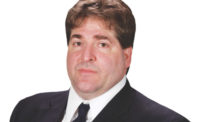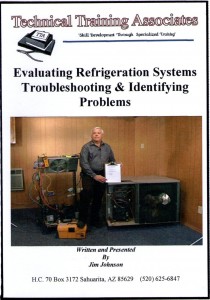BURNER DOESN’T OPERATE
Possible causes:Among the first things to check are the obvious — does the unit have fuel and is it getting electrical power, agreed Scott Sweigart, technical advisor, Thermo Pride, North Judson, IN, and Mike Markarian, vice president and director of education of the New England Fuel Institute (NEFI) and director of education for the National Oilheat Research Alliance (NORA). This problem may also be caused by a thermostat that is set too low. Other possibilities, noted Sweigart, are that there is a control problem or the furnace is off on limit.Possible cures: Get some fuel. Check for a blown fuse or open circuit breaker, or if a switch has been left off, said Markarian.
Check for broken wire(s); trace path of electricity, stated Sweigart. Turn the thermostat well above room temperature. Check to see if filter/ductwork is blocked or restricted, or the blower/motor is not operating, Sweigart added.
BURNER IS OPERATIONAL BUT WON’T FIRE
Possible causes:Again the furnace may lack fuel or there may be a problem with oil delivery, remarked Markarian. There could be a plugged nozzle, filter, or oil line, he said, or a valve could be left off. There may be a cracked porcelain. Sweigart also noted that the problem could be a weak transformer/igniter, electrodes set incorrectly, too much air, oil pump not working, or pump coupling stripped.Possible cures: Get fuel; check for plugged nozzle, filter, or oil line, Markarian said. Open valve. Replace cracked porcelains.
Test and replace transformer/ igniter if necessary, said Sweigart. Adjust electrodes. Adjust air, then perform a combustion analysis. Test oil pump. Replace stripped pump coupling.

BURNER SMOKES
Possible causes:The furnace may have a partially plugged nozzle, it may need a burner adjustment, or it may not have the proper end cone, related Markarian. Other possibilities, according to Sweigart, are not enough air, plugged chimney or heat exchanger, over fire, or wrong nozzle.Possible cures: Clean or replace the nozzle, adjust the burner according to manufacturer’s specifications, or replace the end cone, noted Markarian.
Adjust air and perform a combustion analysis, Sweigart stated. Check chimney condition and heat exchanger condition. Check manufacturer’s ratings plate for the correct nozzle size, spray pattern, angle, and oil pump pressure, he added.
BURNER CYCLES OFTEN
Possible causes:This may be caused by an improper firing rate, said Markarian, or a thermostat problem. Sweigart listed the following: heat anticipator set incorrectly; limit setting incorrect; inadequate duct system; blower speed set too high; or house doors and windows open.Possible cures: Set firing rate within specifications, Markarian said. Check thermostat.
Adjust the heat anticipator to manufacturer’s recommendation or measure the current and set accordingly, commented Sweigart. Set limit settings to achieve the manufacturer’s recommended temperature rise and comfort level of the occupant. Survey the duct system and make any necessary changes. Set blower speed to achieve the manufacturer’s recommended temperature rise. Close doors and windows.
EXCESSIVE FUEL CONSUMPTION
Possible causes:Markarian says that this may indicate an improperly sized furnace or that the system is not adjusted properly.Sweigart notes that the furnace may need cleaning; it may have the wrong nozzle; oil pump pressure is elevated; the ductwork leaks; ductwork is uninsulated; the home doesn’t have the right amount of insulation or has leaky windows and doors; or the doors and windows are being left open.
Possible cures: If replacing, perform a load calculation to determine the correct size and install a properly sized unit. Make adjustments using instruments, said Markarian.
Have the furnace cleaned annually, stated Sweigart. Install the correct nozzle. Check and adjust oil pump pressure. Seal duct leaks. Insulate ductwork. Recommend that the homeowner invest in energy conservation items. Instruct occupants to keep doors and windows closed.
ODORS OR FUMES
Possible causes:Odor or fume problems could be caused by the same things that create smoke problems, declared Markarian. There may be a partially plugged nozzle, the burner may need adjustment, or the furnace may not have the proper end cone. This could also be caused by a cracked heat exchanger.Other causes, said Sweigart, are delayed ignition, the heat exchanger and/or chimney needs cleaning, combustion air has been hindered, or items are being stored too close to the smoke pipe or furnace.
Possible cures: Clean or replace the nozzle, adjust the burner, or replace the end cone, Markarian said. Check for a cracked heat exchanger and replace.
Correct the delayed ignition, said Sweigart. Clean the furnace/chimney. Do a combustion analysis to determine what is hindering the combustion air. Move items from the furnace room and instruct the occupant to keep the necessary clearance from this heat-generating appliance.
CHIMNEY SMOKES CONTINUOUSLY
Possible causes:The majority of the time when you have smoke, it’s a burner problem, stated Markarian. This could also be caused by an obstruction in the chimney.In addition, noted Sweigart, this situation could be caused by poor draft, a chimney in poor condition, or elevated oil pump pressure.
Possible cures: Adjust the burner or have the chimney cleaned, Markarian remarked.
Check draft and adjust properly or install a draft inducer if necessary, Sweigart said. Install an approved chimney liner. Verify nozzle size and double-check oil pump pressure and nozzle combination.
For more information, visit the following websites:
Publication date: 12/16/2002









